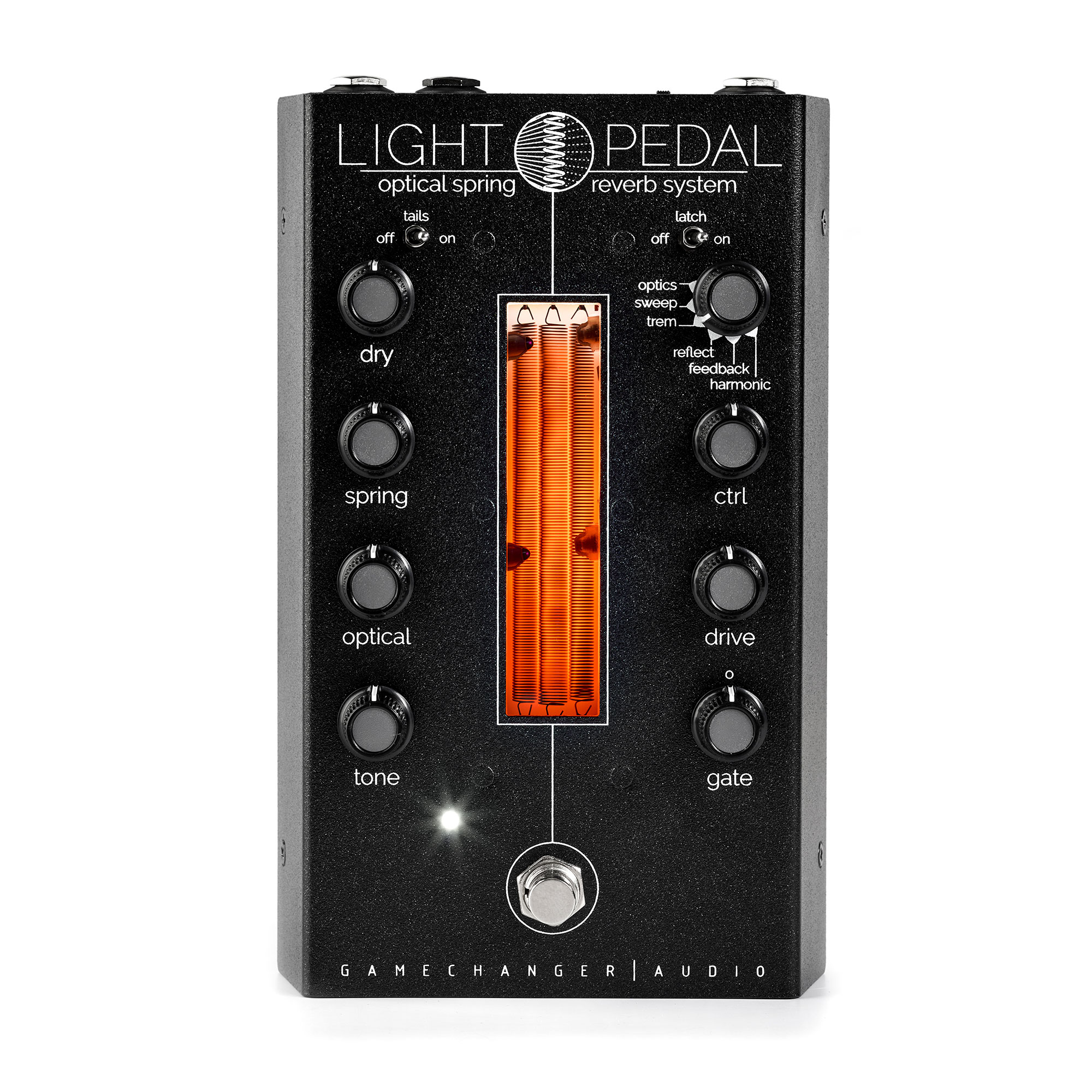Interesting - can't be too difficult a circuit. Combination mini reverb tank and some optical sensors etc

 gamechangeraudio.com
gamechangeraudio.com
This system is used to harvest the full timbral and harmonic range of the spring reverb tank. The LIGHT Pedal combines the best features of a classic spring reverb with the innovative optical sensor system and a powerful effects section. This combination opens up countless new types of reverb textures and sounds never heard before.
 The LIGHT Pedal uses extremely sensitive optical sensors directed at different points of the spring. The optical sensors detect very subtle movements on the spring’s surface as sound-waves travel through it. This method allows to pick up a much wider range of frequencies, overtones and textures otherwise lost in the mechanical reverberation process. The optical sensors also open doors to effects that are new to spring reverbs, such as tremolo, modulation, feedback and added harmonics. The result is a wide variety of reverb sounds ranging from classic to experimental to pure magic
The LIGHT Pedal uses extremely sensitive optical sensors directed at different points of the spring. The optical sensors detect very subtle movements on the spring’s surface as sound-waves travel through it. This method allows to pick up a much wider range of frequencies, overtones and textures otherwise lost in the mechanical reverberation process. The optical sensors also open doors to effects that are new to spring reverbs, such as tremolo, modulation, feedback and added harmonics. The result is a wide variety of reverb sounds ranging from classic to experimental to pure magic

LIGHT PEDAL - Gamechanger Audio
US: No Sales Tax for US Orders EU: VAT will be added to orders without an EU-VAT number Intl: All other countries may face customs duties Lifetime Warranty 30 Day Money Back Guarantee Power supply not included. LIGHT Pedal uses a standard 9V DC center-negative pedal power supply of at least 500...
The LIGHT Pedal is the world’s first analog optical spring reverb system that uses infrared optical sensors.
This system is used to harvest the full timbral and harmonic range of the spring reverb tank. The LIGHT Pedal combines the best features of a classic spring reverb with the innovative optical sensor system and a powerful effects section. This combination opens up countless new types of reverb textures and sounds never heard before.
 The LIGHT Pedal uses extremely sensitive optical sensors directed at different points of the spring. The optical sensors detect very subtle movements on the spring’s surface as sound-waves travel through it. This method allows to pick up a much wider range of frequencies, overtones and textures otherwise lost in the mechanical reverberation process. The optical sensors also open doors to effects that are new to spring reverbs, such as tremolo, modulation, feedback and added harmonics. The result is a wide variety of reverb sounds ranging from classic to experimental to pure magic
The LIGHT Pedal uses extremely sensitive optical sensors directed at different points of the spring. The optical sensors detect very subtle movements on the spring’s surface as sound-waves travel through it. This method allows to pick up a much wider range of frequencies, overtones and textures otherwise lost in the mechanical reverberation process. The optical sensors also open doors to effects that are new to spring reverbs, such as tremolo, modulation, feedback and added harmonics. The result is a wide variety of reverb sounds ranging from classic to experimental to pure magic
